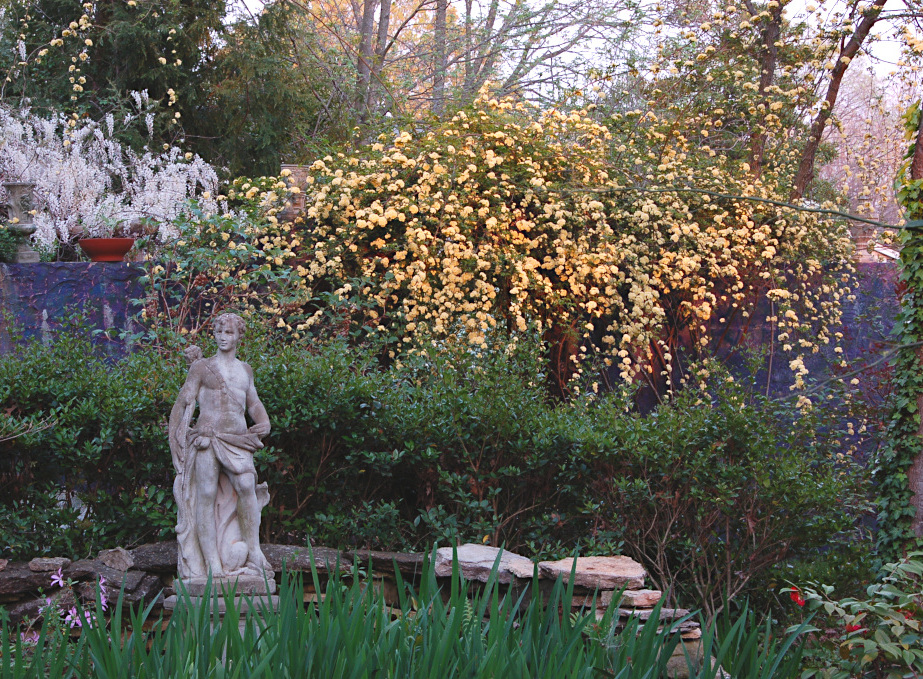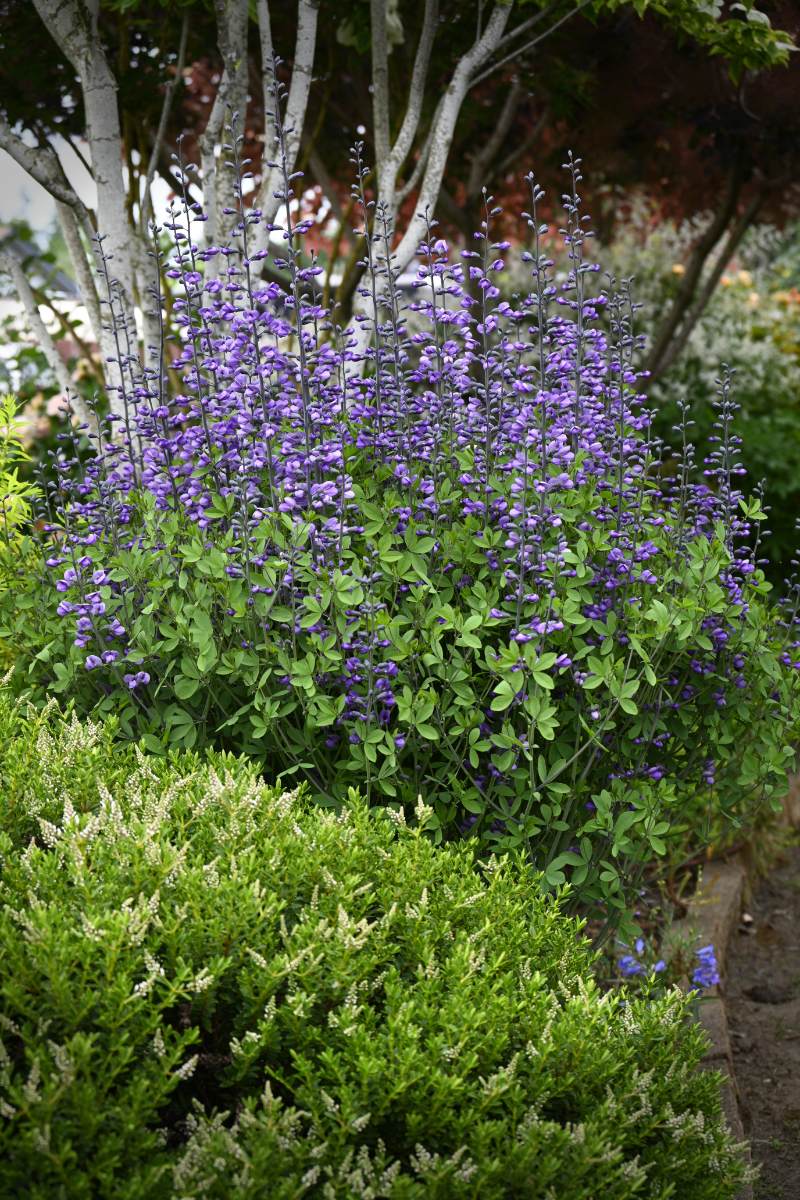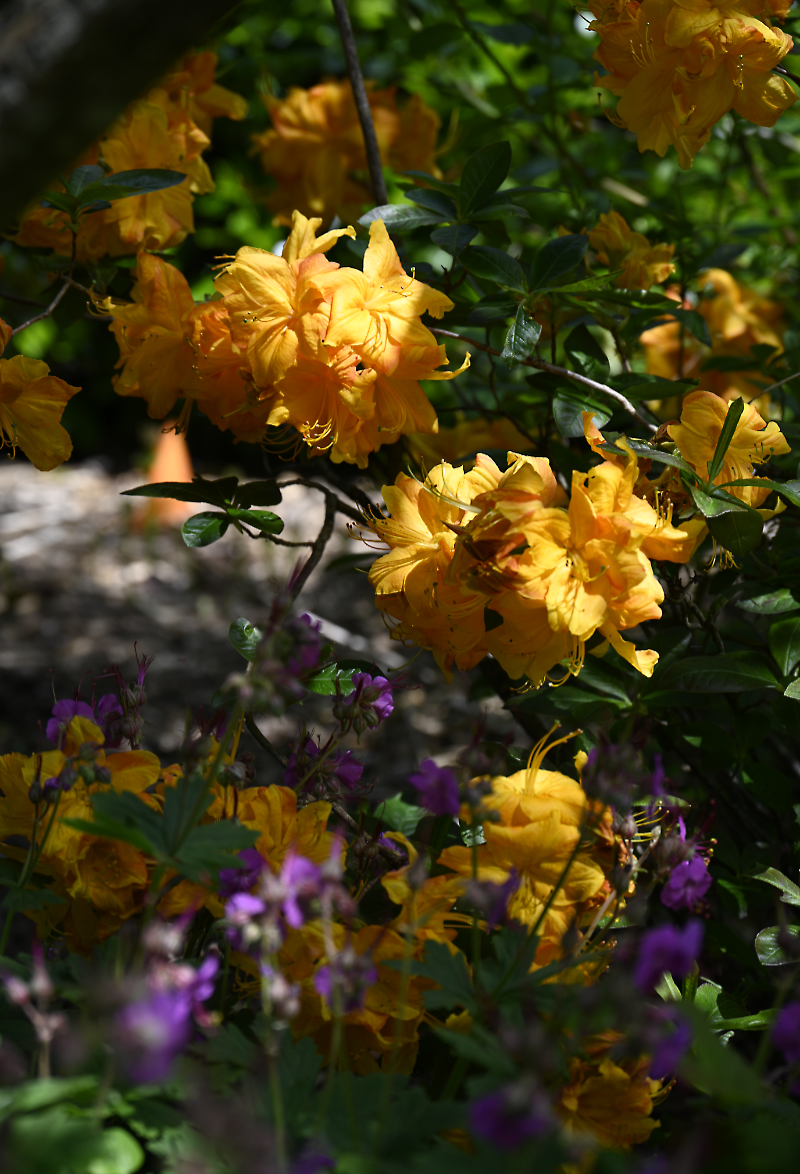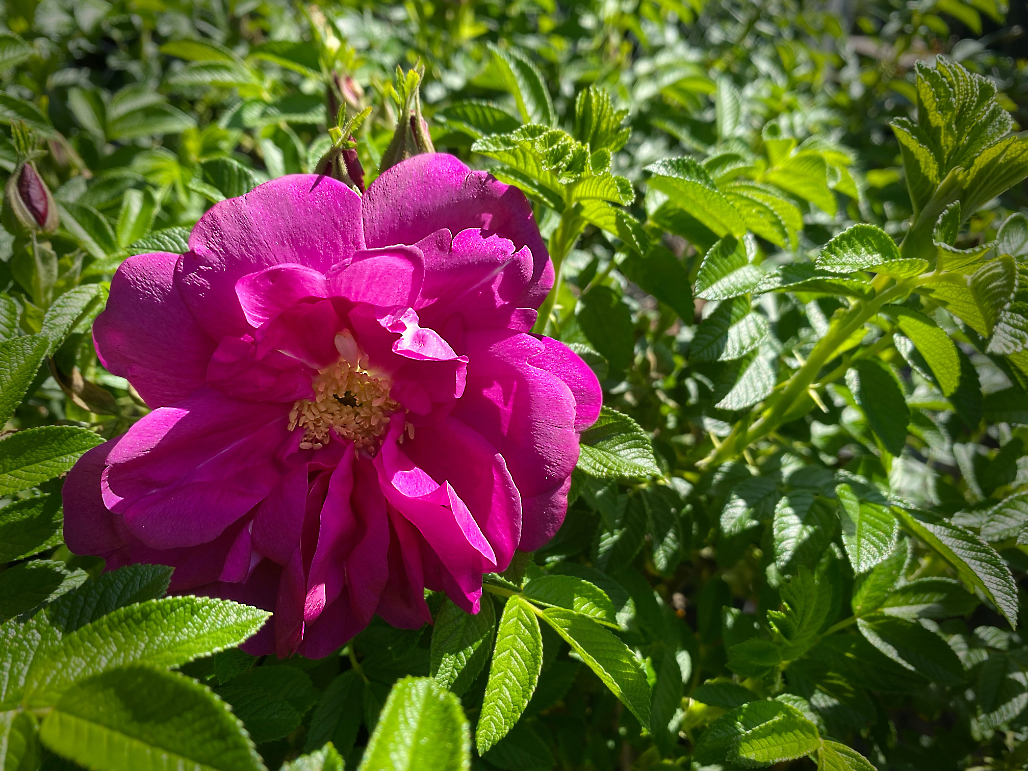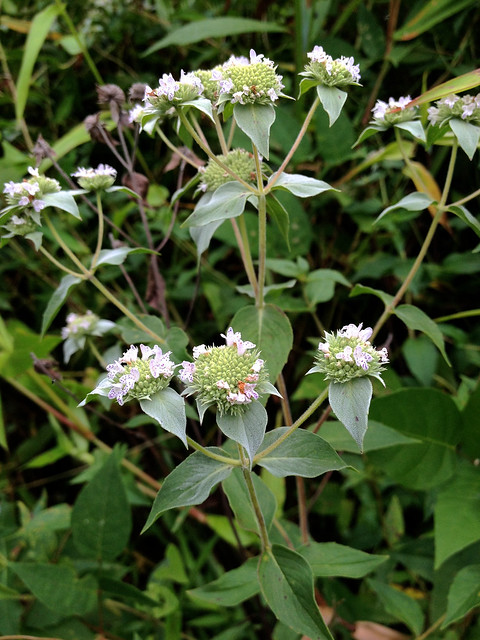Lady Banks Rose
This week we received Lady Banks roses (Rosa banksiae ‘Lutea’). They are located in the Vines section in the greenhouse. This is a vigorous rambling rose, capable of growing to 20-30 feet. In warmer climates, the rose can get even larger. The so-called “largest rose on earth” is a Lady Banks rose (the white form) in Tombstone, Arizona. It was planted in 1886 and it covers a canopy measuring 6,600 square feet. The trunk is over 12 feet thick.
The above photo shows the rose growing in my former garden in Alabama. The photo was taken in 2012 and the rose had been in the ground about five years. This was my second attempt to grow it. The first one, planted in a northern exposure, did not make it through its first winter. It is a slightly tender rose and best situated in a sheltered location.
Whatever location you chose, it must be ample enough to accomodate this rambunctious rose. A wall, sturdy fence, pergola or small structure are viable supports.
In addition to the stunning display of clear, yellow, scentless blooms (and it is literally covered), there is the advantage that it is thornless. Young canes are long, thin and very pliable. So, despite being a monster, it won’t scar you for life when pruning or training.
The biggest disadvantage to Lady Banks is that it only blooms once per year. It is one of the first roses to bloom and stays in bloom for several weeks, perhaps up to a month. A good time to prune it would be after the blooms fade.
The rose was named after Lady Dorothea Hugessen Banks (1758-1828). She was the wife of famed botanist Sir Joseph Banks and she traveled extensively with her husband and helped him catalogue his vast library of plants. The rose was discovered in China by Robert Brown, a plant hunter who was supported by the Banks.

